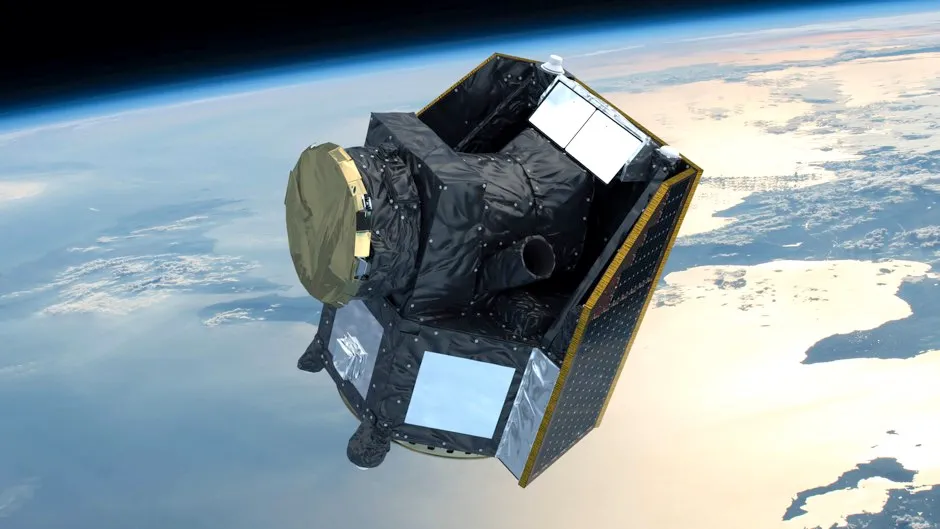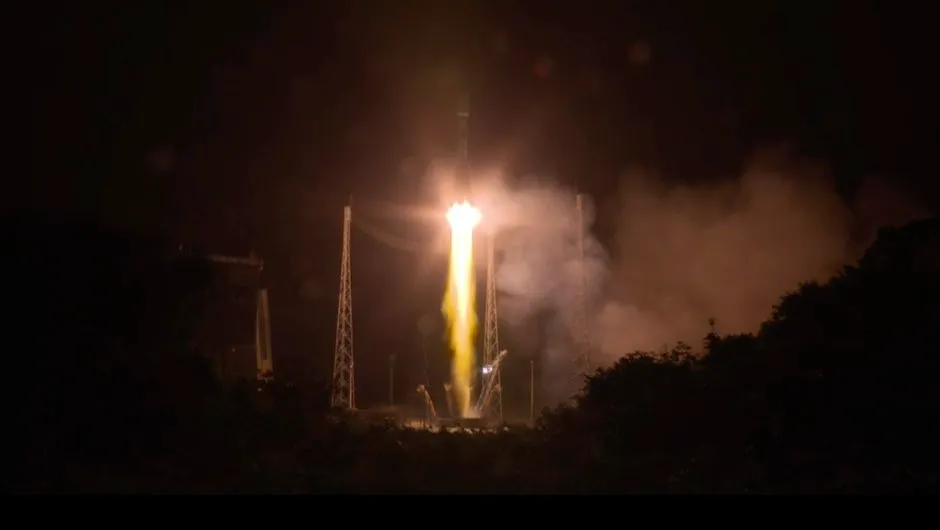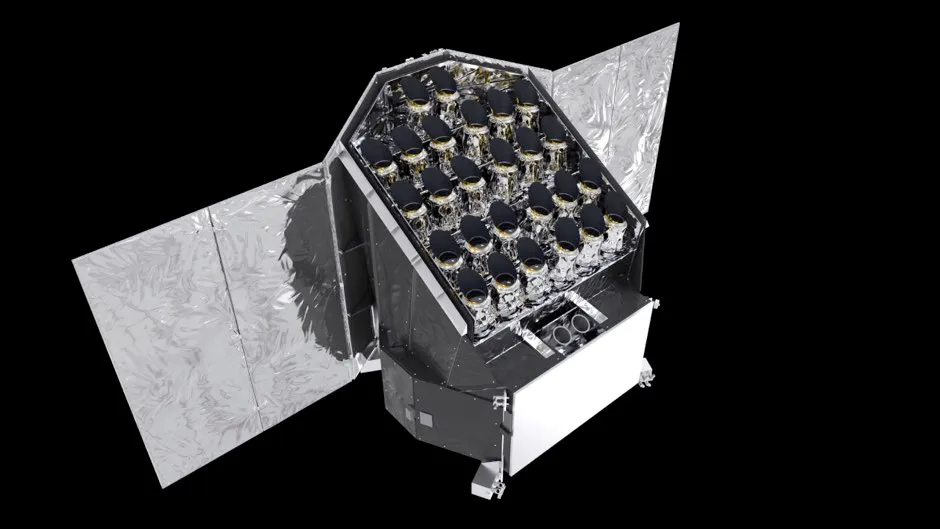CHEOPS is the European Space Agency’s latest space telescope. A Soyuz-Fregat rocket carried it into space from Europe’s Spaceport in Kourou, French Guiana, at 08:54:20 GMT on 18 December 2019. CHEOPS, which stands for CHaracterising ExoPlanet Satellite, is designed to study planets around other stars, known as exoplanets, in more detail than we presently can in order to determine which are like Earth and which are like Jupiter.
“We aim to measure the radii of hundreds of planets accurately enough to be able to tell with certainty whether or not they are predominantly rocky like Earth, or whether their solid surfaces are buried under deep icy, liquid or gaseous envelopes,” says Andrew Collier Cameron, University of St. Andrews, who is a CHEOPS science team member.
It is essentially a search for potentially habitable exoplanets and will allow scientists to place Earth and the other planets of our own Solar System into the bigger picture of planets throughout the nearby Galaxy. It could also help us understand how individual planets change as they age.

What is the CHEOPS satellite?
As satellites go, CHEOPS is quite small. It is hexagonal spacecraft that measures 1.5m by 1.6m at its widest point, and houses a telescope with a 30cm mirror. Generating 60 watts of power through its solar panels, the satellite will study exoplanets by detecting the tiny drop in light they cause as they cross the fiery surfaces of their parent star from Earth’s point of view, a passage known as a transit.
For some planets, CHEOPS will be able to reveal details about their atmosphere including the presence of clouds. It may even be able to gain hints of the clouds’ composition. As well as studying already known planets to unprecedented levels of precision, the mission also has the capability to discover previously unknown exoplanets.
Read more about the search for exoplanets:
- How synthetic atmospheres could help us hunt for alien life
- The weird worlds alien life could potentially survive on
- The hunt for exoplanets
- Project Blue: the hunt for Earth's sister
It will do this by measuring tiny variations in the timing of the transit of a known planet. These tiny variations could indicate that the known world is having its orbit distorted by the gravity of a previously unknown world.
In our own Solar System, 19th Century astronomers used deviations in Uranus’s orbit to pinpoint the position of an unknown world that was subsequently discovered and called Neptune. In the case of CHEOPS, smaller dips superimposed on the larger dip of a known planet can also be used to reveal moons or rings.
CHEOPS is the first of a new type of mission dedicated to improving our knowledge of already known planets. The astronomers who run the mission will be picking key planets to target out of the hundreds and eventually thousands that are coming out of the survey missions like NASA’s TESS (Transiting Exoplanet Survey Satellite), its predecessor the Kepler Space Telescope, and the various ground-based surveys that discovered the first exoplanets back in the mid-1990s.
“Up to now we’ve had to fight for small chunks of time to follow up these discoveries on telescopes like Spitzer and Hubble, which are almost embarrassingly big for the job,” says Collier Cameron, “With an agile, dedicated instrument like CHEOPS we can characterise hundreds of planets in a coordinated way.”

Using those large space telescopes, astronomers have identified individual molecular species in the atmospheres of gas giant planets, measured their orbital tilts and planetary spin rates. On one occasion they even caught a glimpse of what could be a moon around the exoplanet Kepler 1625b.
“We know there is huge discovery potential out there. The exciting thing about CHEOPS is that it brings hundreds of smaller planets – in the Earth-to-Neptune size range – within reach. Once we know their densities, we’ll be able to pick out the prime targets for studying their atmospheres with powerful future instruments like those aboard the James Webb Space Telescope,” says Collier Cameron.
The search for exoplanets like Earth
CHEOPS is the first small-class mission to be implemented as part of ESA’s Cosmic Vision 2015–25 programme. Small missions are defined as those that take no longer than five years from start to launch. This makes it necessary to use only technology that has already been flown in space and thus has been proven to handle the harsh conditions of orbit. The cost of the mission to ESA was also capped at €50 million.
CHEOPS was developed at the Center for Space and Habitability, University of Bern, Switzerland. It was selected by ESA in October 2012, from 26 competing mission proposals, and is now in an orbit of 800km altitude and has a planned lifetime of 3.5 years. The science it will deliver is part of a larger commitment to exoplanet science by ESA and so provides a stepping stone to two further European missions.
In 2026, PLATO, the PLanetary Transits and Oscillations of stars mission, will return to the task of discovering exoplanets. It will look in particular for rocky planets in the ‘habitable zone’ (i.e. where liquid water can exist on the planet’s surface) around Sun-like stars.
As its name suggests it will also investigate seismic activity in stars. This information will enable astronomers to precisely characterise the planet’s host star, including its age, which in turn will provide insight into the age and evolutionary state of any planetary systems it finds.
Two years later, ARIEL, the Atmospheric Remote-sensing Infrared Exoplanet Large-survey mission, will launch. This will analyse the atmospheres of a large, diverse sample of exoplanets. It will allow astronomers to study exoplanets both as individual worlds and as populations of planets.

In all of this work, the hope is always that we will find another exoplanet like Earth. Despite having discovered more than 4,000 exoplanets around other stars, we still have not found an Earth-sized planet in a similar orbit around a Sun-like star. This is a real puzzle and could potentially point to worlds like our own being rare. Since we don’t yet know what makes a planet truly habitable, that could also mean that life is rare.
If the stars – almost literally – align, we could just be lucky enough that CHEOPS finds one. If not, then it is down to PLATO, which has been designed to look specifically for Earth’s twin planets. If PLATO does not find one, we will know that we live on a pretty special planet indeed.